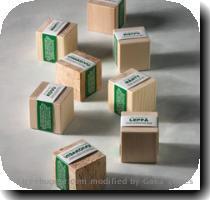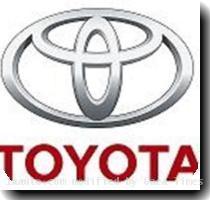Recall troubles show new challenges for famed ‘Toyota Way’ production methods
By Yuri Kageyama, APSunday, February 14, 2010
Recall woes show new challenges for ‘Toyota Way’
TOKYO — Assembly lines that run like clockwork. Supplies that arrive just in time. Dedicated workers trained to spot defects, churning out quality cars in the millions. Such are the trademarks of “Toyota Way” manufacturing.
That’s why the automaker’s recent bungling over a spate of global recalls appears so out of character.
Those very principles of efficiency and flawlessness that earned Toyota Motor Corp. a near-perfect reputation couldn’t prevent problems cropping up in areas outside the factory, areas just as crucial these days in the industry — design development, crisis management and software programming.
Toyota management simply failed to practice what they had long preached the rank-and-file, Anand Sharma, chief executive of TBM Consulting Group, based in Durham, North Carolina, told The Associated Press.
“Toyota managers did not respond to the early signals. That’s when they should have identified the root causes,” said Sharma, who teaches Toyota production methods to businesses. “If the Toyota brand no longer stands for quality, what does it stand for?”
Since October, Toyota has recalled 8.5 million vehicles around the world for accelerator, braking and floor-mat problems in the biggest recall in its seven-decade history.
The gas pedal and floor-mat defects were design errors in supplier parts, and the faulty braking in hybrid models was caused by a software glitch.
They weren’t manufacturing errors, the kinds of defects workers at plants have been trained to pick out — a piece that doesn’t fit, a crack in a part, something that diverges from the design.
“As far as we know, Toyota is still the best manufacturing company in the world when it comes to production management,” Michael A. Cusumano, professor at the MIT Sloan School of Management, said in telephone interview from London. “Workers have nothing to do with this.”
Toyota’s manufacturing prowess has been the topic of countless books, emulated by rivals, including Ford Motor Co., and viewed as critical in Toyota’s climb from a tiny Japanese carmaker to the world’s biggest, surpassing General Motors Co. in 2008.
The Toyota Way, also known as “lean production,” was developed in the 1950s by engineer Taiichi Ohno, who is still revered at Toyota as “kamisama,” which means god.
Based on a ruthless determination to eliminate waste, including avoiding inventory buildup, the Toyota Way has workers tackling their jobs with a passion, following instructions to a tee.
Each worker is empowered to pull on a cord that stops the assembly line. Many work selflessly, at times giving up leisure time for quality improvement.
Even today, Toyota factories are plastered with slogans that urge workers to come up with “kaizen,” or innovations to boost efficiency. Workers are praised for ideas leading to recycling or shortcuts so tiny in impact they almost look like jokes — squeezing mechanical oil out of rags or toylike mechanisms that use pulleys to move along items.
Still, serious trouble was allowed to creep in — elsewhere.
President Akio Toyoda acknowledged in an opinion piece he wrote for The Washington Post last week the company had “failed to connect the dots” between the sticky pedals in Europe, surfacing as early as December 2008, and those in the U.S. that culminated in the massive recalls.
The error in Europe was corrected, starting with the Aygo hatchback in August 2009, and those models were not included in the latest global recalls.
In principle, such fixes stemming from customer complaints are communicated via headquarters for speedy checks in other regions, Toyota Europe spokesman Colin Hensley told The Associated Press. Confounding the effort were factors such as the European models being right-hand drives and mostly manual transmission, he said.
With cars becoming more complex, packed with computerized parts and myriad of software, fears are growing old-style quality controls over manufacturing are rapidly becoming outdated, experts say.
Calls are growing for Toyota to equip more models with a brake override system, a mechanism that overrides the accelerator if the gas and brake pedals are pressed at the same time.
Including such a system, although not required, brings a vehicle safely to a stop even if a gas pedal is depressed, and is a good backup measure for the reported unexpected acceleration in some Toyota vehicles.
While denying electronic or software problems, Toyota announced in November it will install a brake override system in the Camry, Avalon, Lexus ES350, IS350 and IS250, and is considering reprogramming more models. It has promised the system in new production of most Toyota and Lexus vehicles by the end of the 2010.
Making the exact same product again and again — what’s known as “quality control” in manufacturing — isn’t the same thing at all as ensuring safety, according to Steven McNeely, who oversees safety management systems at Jet Solutions, a Richardson, Texas-based carrier.
“Management’s attention and oversight was focused on the business bottom line, and those metrics were quality measures. Management was not focused on safety risk assessment or risk management,” he wrote in his essay, “Lessons Learned From Toyota.”
Others say rigorous testing, managerial foresight and valuing customers are critical to the true Toyota Way, and the company has derailed from that path.
“Toyota has been exemplary at surfacing problems in the factory and stopping production before a crisis was reached,” said Jeffrey Liker, professor of Industrial and Operations Engineering at the University of Michigan, who has written books on the Toyota Way.
“Failure to follow all the principles of the Toyota Way led to this crisis. Now the Toyota Way is the only way out of it,” said Liker.
In issuing an apology at a recent news conference in Tokyo, Toyoda paid homage to the history of the company his grandfather founded, and promised to listen better to consumers.
“This is my own way of kaizen,” he said.
Tags: Asia, Computing And Information Technology, East Asia, Europe, Geography, Japan, Serious, Software, Tokyo



